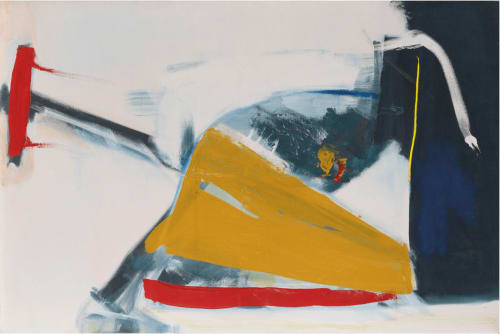Peter Lanyon (1918–1964) was a pioneering British artist known for his innovative contributions to modern art, particularly in the realm of abstract landscape painting. Born in St Ives, Cornwall, Lanyon developed a deep connection to the rugged coastal landscape of his native Cornwall from an early age.
After studying at the Penzance School of Art, Lanyon went on to attend the Euston Road School in London, where he was exposed to the teachings of influential artists such as Victor Pasmore and William Coldstream. However, it was his return to Cornwall in the late 1930s that would prove to be the most formative period of his artistic development.
Inspired by the dramatic landscape of Cornwall and the rich traditions of Celtic mythology and folklore, Lanyon began to experiment with his own distinctive style of painting, blending elements of abstraction with a deep sense of place and history. His early works often depicted the land and sea of Cornwall in bold, expressive brushstrokes, capturing the raw energy and power of the natural world.
In the 1950s, Lanyon's work underwent a significant transformation as he fully embraced abstraction, breaking free from representational constraints to explore the expressive potential of color, form, and texture. His paintings from this period are characterised by their dynamic compositions, vibrant hues, and a sense of movement and depth that suggests the ever-changing rhythms of the Cornish landscape.
